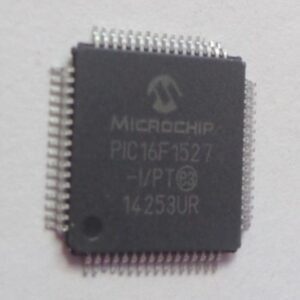Dumping the PIC16F1527 microcontroller source code typically requires advanced reverse engineering techniques to access the secured MCU’s protected firmware. This process involves breaking or bypassing any security mechanisms to access and decrypt the binary or heximal data stored in its flash memory or EEPROM. By dumping this source code, it’s possible to recover or restore essential programs and software that control the microprocessor’s operations.

Copying or cloning the firmware from a protective microcomputer like the PIC16F1527 may also involve creating a binary image, allowing replication or analysis of the original software. Understanding the underlying program and hardware protection layers is critical, as these microcontrollers are often designed with security features to prevent unauthorized copying or dumping. With specialized tools and knowledge of microcontroller architecture, source code extraction from the PIC16F1527 is possible, allowing for diagnostics, backup, or cloning of firmware for system redundancy.

Dump PIC16F1527 Microcontroller Source Code needs to know the INTERRUPT-ON-CHANGE mechanism, as we have already mentioned the PORTB pin from previous content, this is a series of pins can be configured to operate as Interrupt-On-Change (IOC) pins to Unlock Microcontroller.
INTERRUPT-ON-CHANGE BLOCK DIAGRAM

The IOCBFx bits located in the IOCBF register are status flags that correspond to the Interrupt-on-change pins of PORTB from Dump PIC16F1527 Microcontroller Source Code. If an expected edge is detected on an appropriately enabled pin, then the status flag for that pin will be set, and an interrupt will be generated if the IOCIE bit is set. The IOCIF bit of the INTCON register reflects the status of all IOCBFx bits in order to carry out the task of Microcontroller Chip PIC18F252 Program Copy.
The individual status flags, (IOCBFx bits), can be cleared by resetting them to zero. If another edge is detected during this clearing operation, the associated status flag will be set at the end of the sequence, regardless of the value actually being written in the process of Microchip MCU PIC18F258 Binary Extraction.

In order to ensure that no detected edge is lost while clearing flags, only AND operations masking out known changed bits should be performed. The following sequence is an example of what should be performed.


